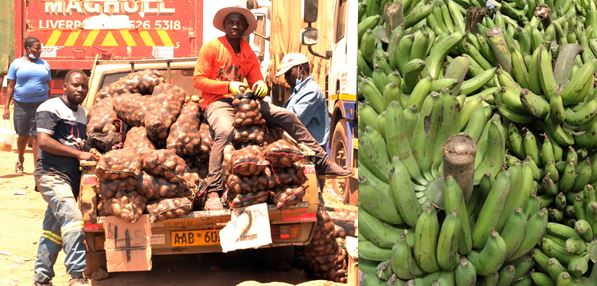Converting natural resources into food and raw materials requires thoughtful action
If converting natural resources into food and raw materials was as easy as it sounds, food insecurity and poverty would not be so rampant in most developing countries that are blessed with abundant natural resources. Although their populations were low, it seems African fore-fathers were good at converting natural resources into food and other needs without damaging the planet.

In spite of investment in modern technologies through industrial agriculture, climate change-induced droughts, floods and other shocks are demonstrating people’s failure to use natural resources sustainably. Failure to efficiently convert natural resources into food is seen in the number of diverse grades or ranges produced in particular commodities. For instance, upon harvest, potatoes often fall into more than three ranges comprising chats, small, medium, large and extra-large. The fact that the same inputs are used to produce these different ranges is an indication of failure by the industrial food system to use soil, water, labour and other inputs in ways that maximize production. Differences in prices between chats (USD3-4) and extra-large (USD10) for the same quantity shows that farmers who produce more chats incur huge losses.
Can natural resource really secure community resilience?
This question is not easy to answer. If natural resource were enough, African countries would not see the majority of youths migrating from rural areas with high potential to urban areas were employment is scarce. A lot of fertile land in rural African remains fallow because policy makers have failed to help young people to convert land into food, income and a hopeful future. A new mindset and leadership focus is critical if natural resources like land, water and favourable climates are to be used in building restorative economies and place-based local solutions without plundering the environment.
The power struggle between indigenous or local knowledge and imported knowledge is now the struggle for livelihoods. Gold panning is increasing not because people want to destroy their environment but because they want to earn a living. How can policy makers help communities to balance livelihood requirements with conserving natural resources and indigenous knowledge systems? Instead of pouring resources into industrial food production which is proving to be unsustainable, policy makers should use technology to build plantations for indigenous fruits. There is no reason why indigenous fruits and other local food systems cannot be part irrigation systems.
A number of development agencies working in the livelihoods space across Africa have been trying to build community resilience using natural resources. However, after noticing that natural resources may not be enough in providing all the solutions, they have complemented these efforts with irrigation schemes. Unfortunately, the irrigation schemes do not produce diverse commodities necessary for complete food baskets. That is partly why food and nutrition security has remained stubbornly difficult to achieve in most African countries.
Digital technology may be part of the solution
Although digital solutions have their downsides, they can go a long way in consolidating food systems and sustainable utilization of natural resources. For instance, riding on digital solutions, many organizations are beginning to see value in setting up knowledge centres for consolidating information and statistics in production zones for sharing with the market. When information is scattered, resources are wasted. Plans for each irrigation scheme can be synthesized in the knowledge centre and then shared with the market to ensure all year-round production and supply.
Ideally, each production zone should have a knowledge centre for integrating production zones with diverse markets. Riding on digital technology, the knowledge centre has capacity to pull information from production and inform the market of progress in production towards meeting market expectations. Market-oriented extension can then be easy to introduce so that information from the market in terms of standards, orders and quantities can be relayed to farmers and other actors like transporters and processors. That level of alignment is very important in converting natural resources into food, raw materials and related services.
The knowledge centre can also be responsible for documenting and packaging indigenous knowledge in each community into an investment guide that can attract local and external investors.
Investment is not just about physical assets like dams, bridges and roads. It is possible for the knowledge centre to stimulate investments in indigenous knowledge-based opportunities around food diversity and natural resources, all the way to regional and international trade.
charles@knowledgetransafrica.com / charles@emkambo.co.zw / info@knowledgetransafrica.com
Website: www.emkambo.co.zw / www.knowledgetransafrica.com
Mobile: 0772 137 717/ 0774 430 309/ 0712 737 430
